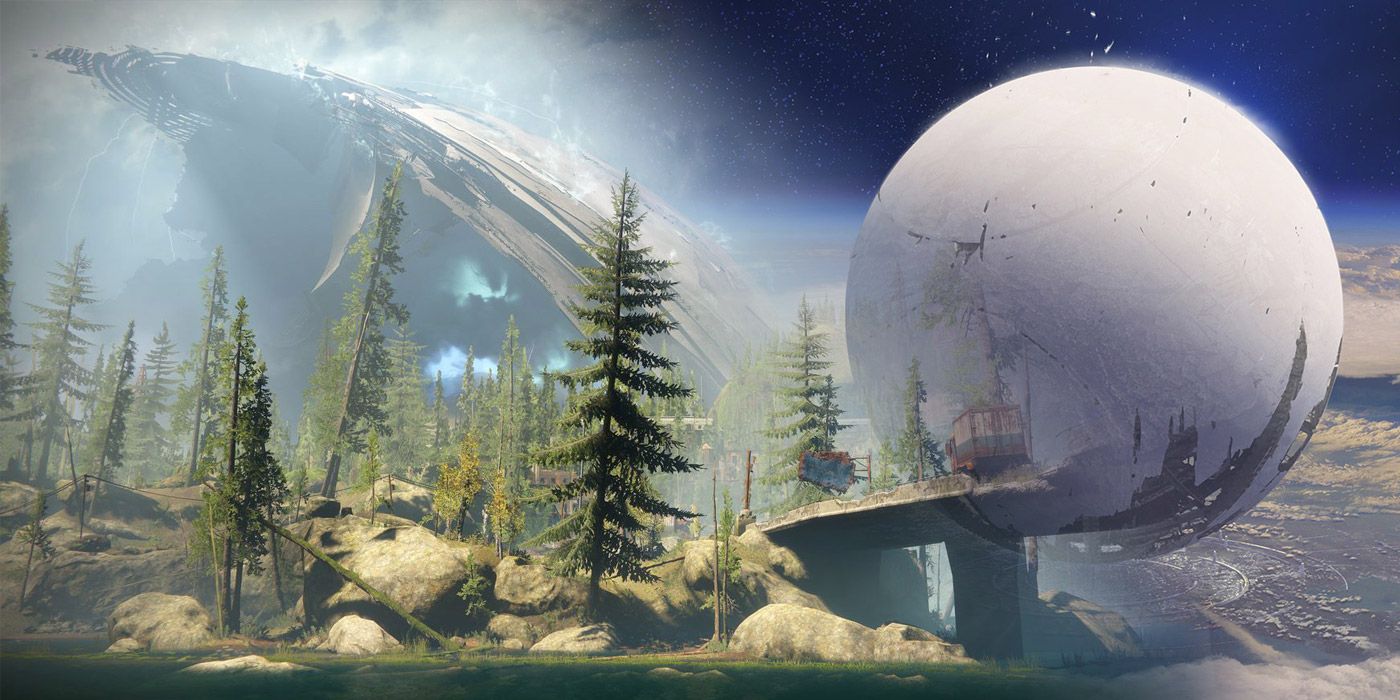
When Bungie announced the next three years' worth of expansions for Destiny 2, it made a definitive statement to players that it was going to be here for the long haul, and that from now on, it would be far more committed to building the world of Destiny. Gone are the days of Curse of Osiris and Warmind, individual side stories that did little in the grand scheme of things. With Destiny 2: Beyond Light, Bungie is in the process of bringing about the arrival of the long-teased pyramid ships, bringing back famous Exo Stranger from Destiny's original campaign, and is completely removing a lot of older content.
The arrival of the pyramid ships and the "Darkness" threat not only means that players will have access to brand new sub-classes and abilities but also that the Traveler could potentially start to play a much larger role in the game's narrative. At the end of The Red War, the Traveler was supposedly awoken but has played little to no role in Destiny 2's story ever since. Bungie is now stuck between a rock and a hard place where it runs the risk of doing too little or too much with the Traveler to satiate players desire for more story and lore. Obviously, the Traveler is in some sort of danger as the pyramid ships gets closer to Earth but could there be an even bigger problem that players haven't thought about?

The origins of the Traveler and where it came from are largely unknown in the Destiny franchise. The entity is largely associated with the Light, the counterpart of the Darkness, and is responsible for terraforming planets across the solar system, as well as the creation of the Ghosts. The Traveler was first discovered by humanity when it appeared around Jupiter but wasn't located until its arrival on Mars, bringing rain to the desert planet for the very first time. The arrival of the Traveler brought about the Golden Age of humanity, a time where people were able to discover and use new technologies that allowed the species to build, expand, and travel across the solar system.
With the entity's sole purpose being to help other worlds, before moving on to somewhere new, the Traveler ultimately sacrificed itself to save humanity from the Darkness during the Collapse and has remained dormant above the Last City ever since. Its final gift to humanity was the creation of the Ghosts, sapient machines that seek out and revive fallen soldiers capable of wielding the power of the Light to protect humanity now that the Traveler was no longer able to. Until the events of the Red War in the Destiny 2 launch campaign, the Traveler remained dormant but was awoken by Ghaul and has likely spent the last three years healing itself from wounds inflicted by the Darkness during the Collapse.
The Destiny franchise has a number of similarities to Bungie's previous sci-fi first-person shooter franchise, Halo, particularly when it comes to worldbuilding and former civilizations. One thing the original trilogy always touched upon but never fully explored was Halo's Forerunners, an ancient species responsible for the creation of the Halo rings, as that wasn't the story Bungie was trying to tell.
Leaving those questions unanswered meant that Bungie was able to expand and build the world of Halo while focusing on telling a cohesive narrative about the war between humanity and the Covenant. Each game (and book) in the series added more detail to the larger world of Halo and the story of the Forerunners but never too much that the mystery was no longer exciting.
Until the release of Halo 4 in 2012, that is, when 343 Industries took over the franchise and put the Forerunners front and center. It's no secret that Halo 4 and Halo 5 aren't as beloved among the main fan base as the original trilogy and a large part of that came down to the direction of the narrative. Halo 5's campaign plays no small part in that for its storytelling, and while Halo 4's campaign was praised by fans and critics alike for its focus on the relationship between Master Chief and Cortana, many were underwhelmed. The Didact, the Prometheans, and the rather confusing focus on the Forerunners all stand out as to why.

Destiny has largely been criticized either for its storytelling approach and/or its emphasis on side stories. The original Destiny 2 campaign had a structured focus and ended with some rather large teases for both the Traveler and the Darkness but has since been followed up self-contained stories; Shadowkeep teased the pyramid ships but ended too quickly and without much consequence. Destiny 2 is now in a position where every story, small or large, is pushing toward something bigger and with that comes a great opportunity to finally expand on the story of the Traveler. The danger is in how far Bungie should go: too little and it runs the risk of the same criticisms the franchise has received for the last seven years, too much and the excitement and mystery could be taken away.
Fortunately, the arrival of the pyramid ships hopefully means the story is headed towards an all-out war between Destiny 2's Light and Darkness, so in this case, as long as series isn't put the bed with a neat little bow, only good things can come from the Traveler waking up and coming to the fight. With new characters, new allies, new enemies, new abilities, there's plenty of room for Destiny 2 to expand in new ways that players have never seen before. Bungie should use the next three years to go absolutely crazy with the story, listen to the many criticisms over the years, and start delivering on a real "space-opera" adventure that it teased the game to be in the first place.
Destiny 2 is available now for PC, PS4, Stadia, and Xbox One.
from Game Rant - Feed https://ift.tt/30tM4UU
Comments
Post a Comment